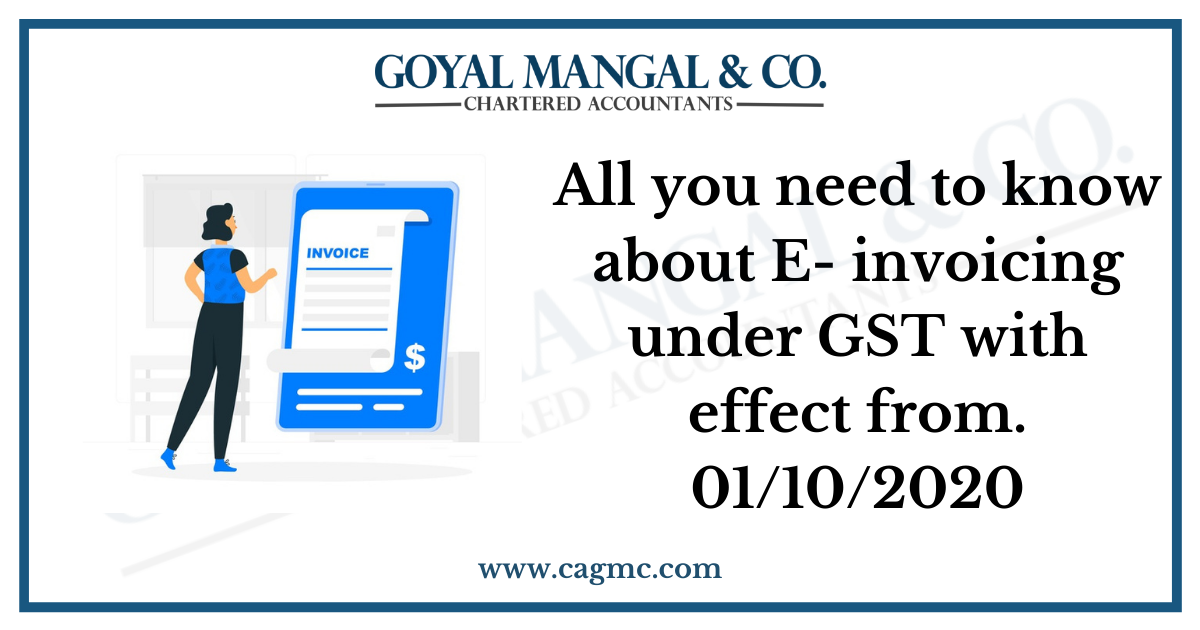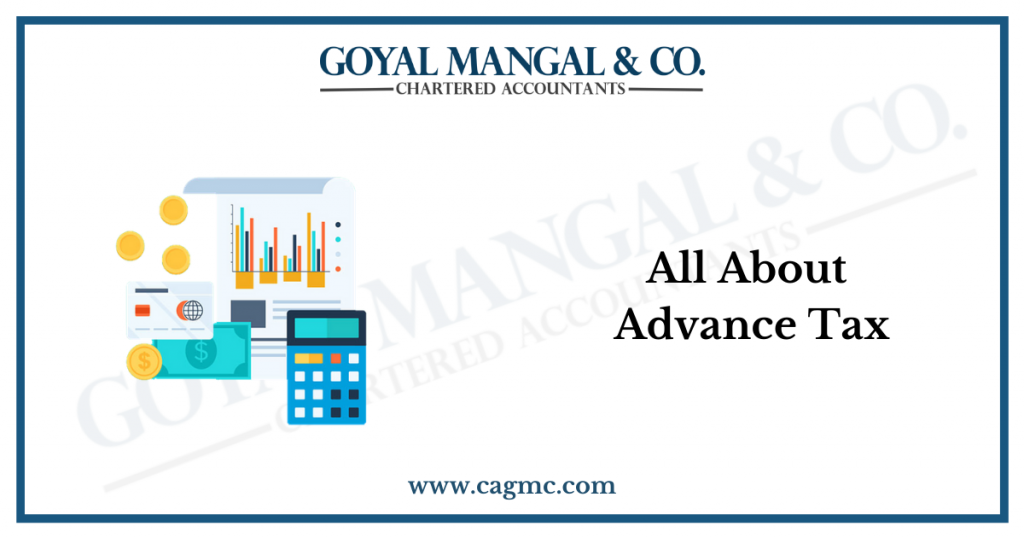| Content
Who is required to generate E-invoice? Who is not required to generate E-invoice? What are the modes for generating E- invoice? |
What is E-invoicing?
- E-invoicing is the exchange of the invoice document between a supplier and a buyer in an integrated electronic format.
- This system is a system which uploads all the B2B invoices electronically.

Who is required to generate E-invoice?
- The GST e-invoicing will provide multiple categories under which the taxpayer will fill the e-invoice as per the turnover and other criteria.
- As per the notification no. 61/2020 – Central Tax; e- invoicing for businesses with turnover above ₹500crore, increasing the threshold for mandatory issuing of electronic invoices from the earlier limit of ₹100 crore turnover providing relief to small scale companies. Once registered, the taxpayer must generate e- invoice even if the turnover decreases for less than 500 crores in the subsequent year.
Who is not required to generate E-invoice?
The following persons are not required to generate E-invoice:
- Insurance company
- Banking company
- Financial institution
- NBFCs
- GTA
- Supplier of passenger transportation
- Supplier of services by way of admission to the exhibition of cinematograph films in multiplex screens
- Special economic zones
What are the modes for generating E- invoice?
The various modes for generating E- invoice are as follows:
- Web-based: Logging into the e- invoice portal and entering the invoice data manually to generate the e-invoice.
- API/GSP based: Third party software (secure folder, Excel connector, Direct Database Access, Interface to access ERPs (Pull) and click Button in ERP (Push))
- Mobile app- based: Enabling the generation of e-invoice through a mobile application
- Offline tool based: Generating e-invoice through an offline excel tool where the data can be uploaded and exported to the IRP to generate the IRN.
What is the process of generating E-invoice?
The process of generating E- invoice is as follows:
- The first step in the processing of the E- invoice is to register in the e- invoice portal.
- The seller/ supplier will create an invoice in the prescribed format (e-invoice schema) using his/her accounting or billing software. It must have the mandatory details.
The accounting software of the supplier will generate a JSON for each B2B invoice. The JSON file will be uploaded to the IRP.
- The next step would be to generate a unique IRN by the seller using a standard hash- generation algorithm.
- Now, the seller will upload JSON for each of the invoices, along with IRN, to the Invoice Registration Portal, either directly or through a third – party software.
- IRP will validate the hash/ IRN attached with JSON or generate an IRN if not already uploaded by the supplier and authenticate the file. Upon successful verification, it will add its signature on the invoice and a QR code to JSON. Hash generated earlier will become the new IRN of the E- invoice. It will be the unique identity of that e- invoice for the entire financial year.
- The uploaded data will be shared with the e- way bill and GST system.
- The portal will send the digitally- signed JSON along with IRN and QR code back to the seller. The invoice will also be sent to the buyer on their registered email id.
What is the time limit for the generation of E-invoice?
- The law does not specifically provide for any time limit within which the e- invoice is required to be generated. However, the following points are to be noted:
The specified persons will have to generate the e- invoice before the transportation of the goods i.e. movement of goods on any invoice without an IRN generation would be an invalid document in terms of rule 48(5) rules.


